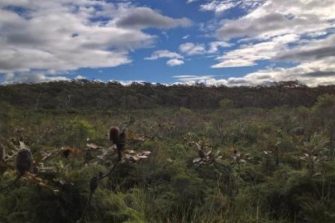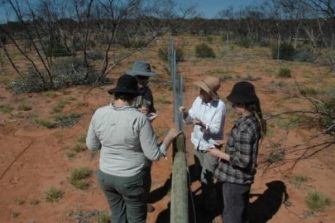
- ARC Linkage Project LP0990137.
- Investigators include Prof. Richard Kingsford, Dr Daniel Ramp, Dr Ashish Sharma, Dr David Keith.
- Partners include the Sydney Catchment Authority and the NSW Department of Environment, Climate Change and Water.
- Project timeframe: December 2009 to December 2013
Aim
This study aims to develop an understanding of the impact of vegetation and fire interactions on water yield in water catchments under climate change for input into an adaptive management framework.
Summary
Secure drinking water supplies are vital for a sustainable future. Pressure on water storages is rapidly increasing, driven by short and long term climatic shifts and increasing demands from rising populations and industry. Pivotal is the ability to maximise the collection of rainfall runoff into water storages. Risk to water resources will be exacerbated by climate change, seriously affecting ongoing delivery of water at local, regional, national and global scales. The drying up of water supplies and subsequent lack of drinking water has impacted many urban and rural communities, causing exodus and seriously affecting some local economies.
While water restrictions and demand reduction will alleviate pressure on supplies, it is vital that catchment managers have effective and adaptive tools for maximising water yield and preparing for future scenarios. As a vital ecological service, water yield cannot be effectively managed solely by setting aside protected catchment areas.
Water storages collect rainfall from catchments. Catchment water yield is governed by climatic, ecological and hydrological processes. Traditionally in these areas, patterns, processes, interactions and functions have been investigated in isolation, but essential interdisciplinary research for integrated solutions demands new and innovative approaches to better describe complexities.
Ecohydrology, or hydroecology, has emerged as a new interdisciplinary field, blending research specialities into one holistic framework. Complementary perspectives are necessary to understand and manage complex interactions between abiotic and biotic patterns and processes on multiple temporal and spatial scales. Our innovative approach couples ecological and hydrological models across a range of spatial scales embedded within a better management framework for catchment water yield.
Objectives
This four-year research programme has four principal objectives:
- To develop fine-scale landscape models integrating vegetation dynamics, fire regimes, and hydrological processes within sub-catchments.
- To identify horizontal patterns of connectivity and configuration within sub-catchments that play a critical role in determining water yield.
- To examine the impacts of climate change and fire on the interactive effects of ecohydrological processes on water yield within sub-catchments.
- To identify strategies for maximising water yield averaged across future scenarios that can be embedded in adaptive management frameworks.


